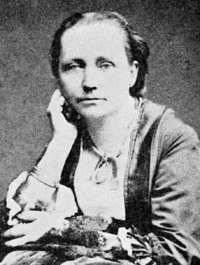When it comes to relationships borne of the enemies to lovers trope, one stands above the rest. In every female English major (or at least this one), there is a little girl who fell in love with Fitzwilliam Darcy, who saw herself as Elizabeth Bennet, armed with a book and a smile. The idea for this research project stems from far too many viewings of Pride and Prejudice (2005) and a childhood attachment to the idea that people who miscommunicate, misunderstand, and are tremendously angry with one another, could still end up falling in love.
Austen is known for her careful and complex female characters. The women of her stories are never just a mother figure or a pretty thing to look at. They have depth, personality, quirks and flaws. They grow and change over the course of their stories in ways that many female characters are not given the chance to. In many ways, I would describe Jane Austen and her writing as a feminist.
One thing that has always bothered me about Pride and Prejudice is the title. Austen initially had planned to publish the book under the title First Impressions. I think that is a perfect title for the story. It covers the source of the conflict – a misunderstanding when Darcy and Elizabeth first meet one another – and doesn’t give too much away. Of course, it doesn’t have the same ring to it as the final title and Austen was really feeling alliteration and opposition in titles in the early 1810s (with Sense and Sensibility in 1811 and Pride and Prejudice in 1813). However, I think that the descriptors pride and prejudice aren’t really reflective of the difference between Darcy and Elizabeth.
To be more clear, I don’t think that Darcy and Elizabeth are really that different at all, and to divide them into two monikers with the connotations that the words pride and prejudice have is to set us up to have assumptions as to who is right and wrong from the jump. Pride, despite being one of the seven deadly sins, isn’t the worst thing you can be called. It is in our vernacular as a positive most of the time, with sayings like “you should be proud of yourself” or calling June ‘pride month’. There is no prejudice month. Prejudiced is never something anyone is encouraged to be.
Anyways, Darcy may be prideful, but why shouldn’t he be? He is tremendously rich and well-landed. He deserves to be proud, to think well of himself. His “large estate in Derbyshire” and “his having ten thousand a year” (12) are allowances not afforded to Lizzie, who is “tolerable, but not handsome enough to tempt me” (13).
Elizabeth and her prejudice, on the other hand, are given no excuse, even when her judgement on Darcy is far better warranted than Darcy’s smugness as to her family. Elizabeth is supposed to be wrong for holding a bad view of Darcy for as long as she does, but for a vast majority of the novel Darcy does nothing to redeem himself from their calamitous first meeting.
My biggest issue with the moral coding of the title is that Elizabeth receives a negative attribute when she behaves much the same way as Darcy does. Darcy is prejudiced against the Bennets because of their social status and their admittedly grievously awkward and inappropriate behavior in social settings. Elizabeth is too proud to consider that she might be wrong about Darcy. Yet Elizabeth is the one who is prejudiced, and Darcy is the one who is proud. This is a classic case of traits that are perceived as negative in the woman being the same ones that are heralded in a man. You’ve heard this story before. When a woman speaks up in a board meeting, she is ‘bossy’, ‘bitchy’, ‘overbearing’. When a man does the same, he’s ‘authoritative’, ‘confident’, ‘assertive’.
In many enemies to lovers narratives, the emotional burden falls on the woman to improve the man or be improved themselves. What does the woman have to improve to become lovable versus the man? In this case, Darcy has to learn to accept that he might not be too good for Elizabeth, despite her embarrassing family. Elizabeth has to forgive Darcy for being actually pretty mean to her on more than one occasion.
Pride and Prejudice— it seems like Elizabeth and Darcy behave the same way, commit the same sin? Why the semantics? Well, because pride is far more unforgivable in a woman than it is in a man.
It may seem like I have a grudge against Darcy. I promise that couldn’t be farther from the truth. Despite that, I do think that the way that women and men are depicted in narrative directly correlates to how women and men feel they should act in the real world. Therefore, semantics aren’t a petty matter. They’re important.
Pride and Prejudice is a story that so many little girls grow up reading. They should know that they deserve to be the one who is too proud, who thinks themselves too good. Far too often the opposite is true.
WORKS CITED:
Austen, Jane. Pride and Prejudice (Penguin Classics). Penguin, 2011.
